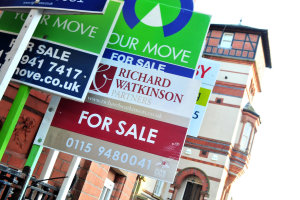If you own a home in Baltimore, you probably know the housing market is recovering. But how much?
Not so much, actually. Housing has turned up nearly everywhere, with the average home price nationwide up about 12% during the past year. But some markets are going gangbusters while others barely seem to have escaped the gloom.

Baltimore, it turns out, is a housing laggard, according to a new RealtyTrac housing-recovery index that ranks 100 metro areas based on 7 variables including home-price appreciation, the unemployment rate and the decline in foreclosure rates. In Baltimore, prices are up, foreclosures are down and fewer homeowners are underwater on their mortgages, owing more than the home is worth. But the market in Baltimore is still far weaker than in 99 other cities ranked in the index, making it the lowest-ranking metropolis.
That illustrates how a spotty economic recovery is creating new boom and bust cities. The most promising housing markets tend to be in cities with relatively low unemployment, including several smaller cities that never had much of a housing boom back in the go-go days of 2004 and 2005. In Rochester, N.Y., for instance--the No. 1 city--the percentage of home owners who are underwater is just 7%, compared with a nationwide average of 26%. That's largely because there was never a huge run-up in prices in Rochester, or the rampant speculation that became prevalent in cities such as Miami, Phoenix and Las Vegas.
Here are the top 10 metro areas where the housing recovery is strongest, ranked by their showing in the RealtyTrac index:

[Click here for a slideshow of the top 10 cities.]
The average unemployment rate for those 10 cities is 7.1%, which is too high for comfort but still lower than the national average of 7.4%. And homes in those cities have appreciated by 63% on average since the housing market bottomed out.
In depressed cities such as Flint, the housing “recovery” comes from home prices that collapsed and now seem to be taking off, even if they’re never likely to regain prior levels. But in most of the other top 10 cities, housing is bouncing back because the underlying economy is.
It’s a murkier picture in the bottom 10 cities:

[Click here for a slideshow of the bottom 10 cities.]
The average unemployment rate in the bottom 10 cities is 9.3%, and homes have only appreciated by 15.9% on average since the bottom of the housing bust. When jobs are scarce, it hampers nearly everything about the housing market. More people fall behind on their mortgages, leading to more foreclosures. There are fewer working people who can afford a home, which crimps demand, weighs down prices and discourages people from selling their homes to move up or take a better job someplace else.
In that way, a strong housing market usually accompanies a vibrant economy, while a weak housing market and a sagging economy amplify each other. In a few lucky cities, it may seem like the housing bust never happened. But in most places, it seems like it only ended yesterday, if at all.
No comments:
Post a Comment